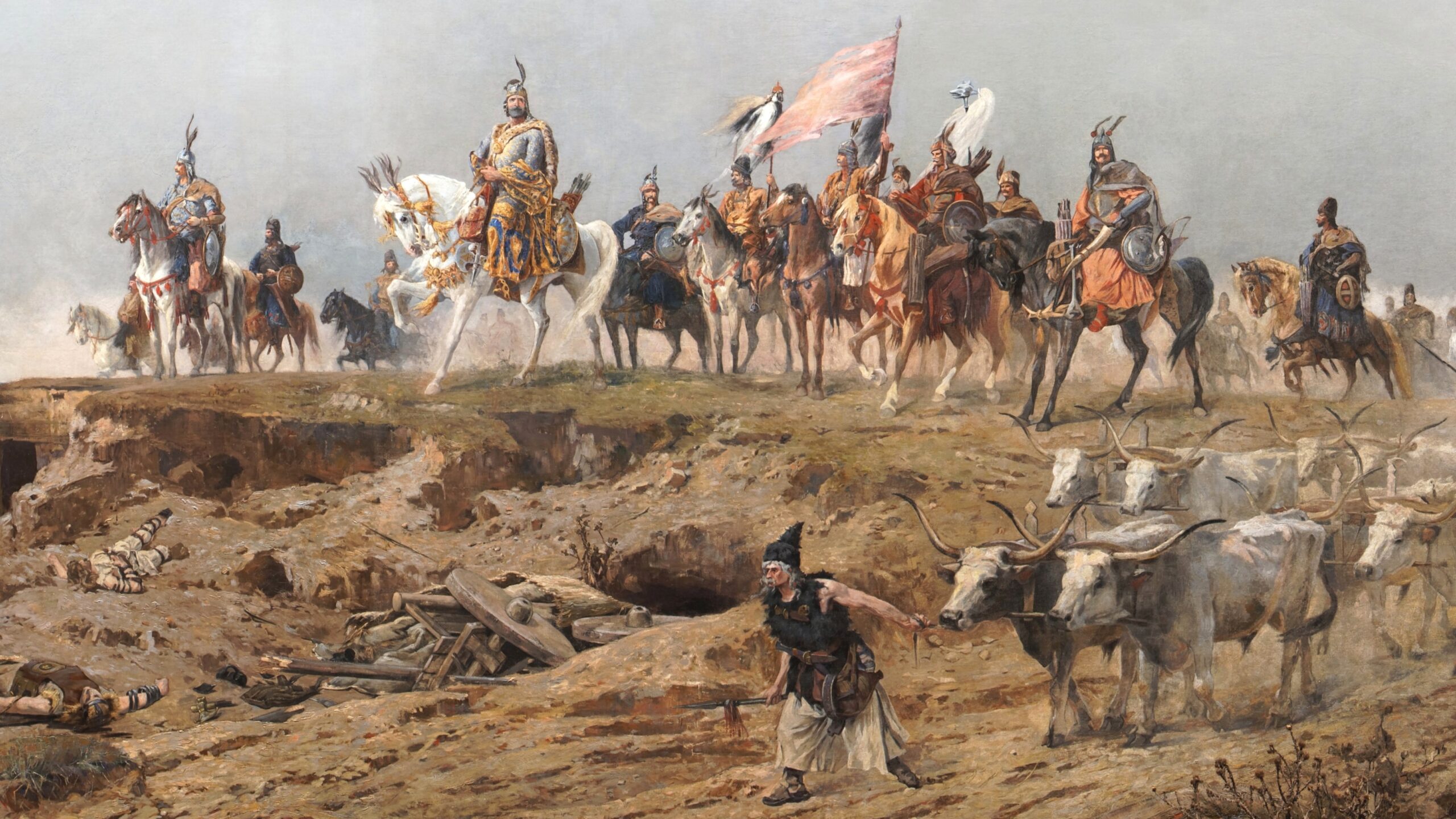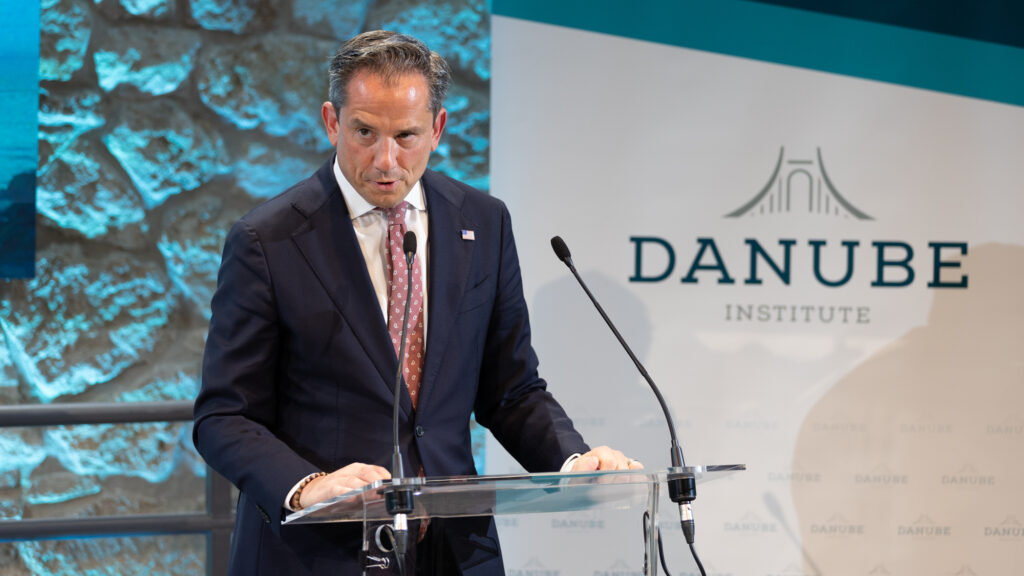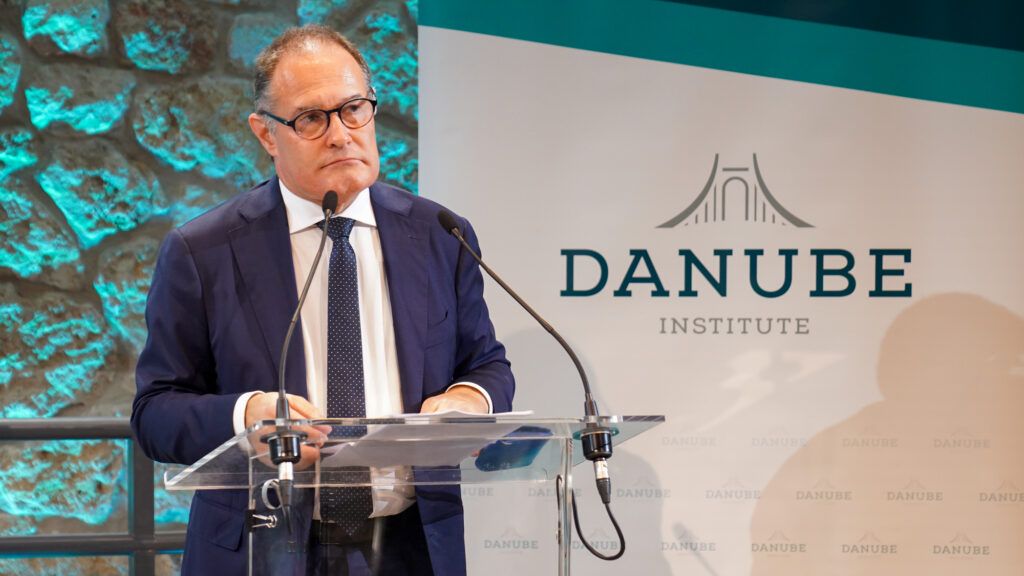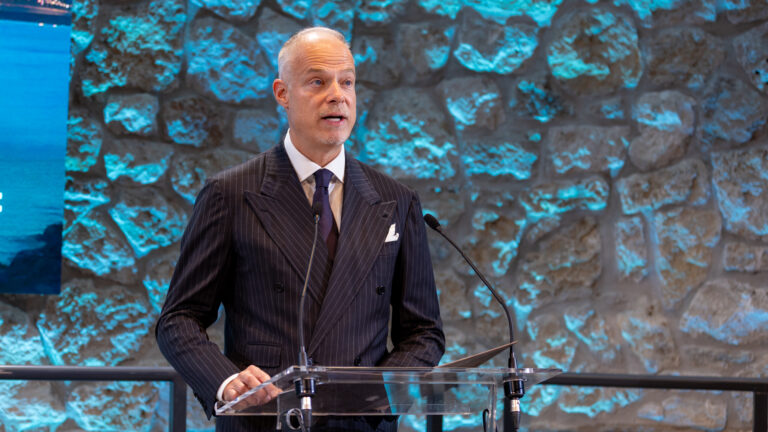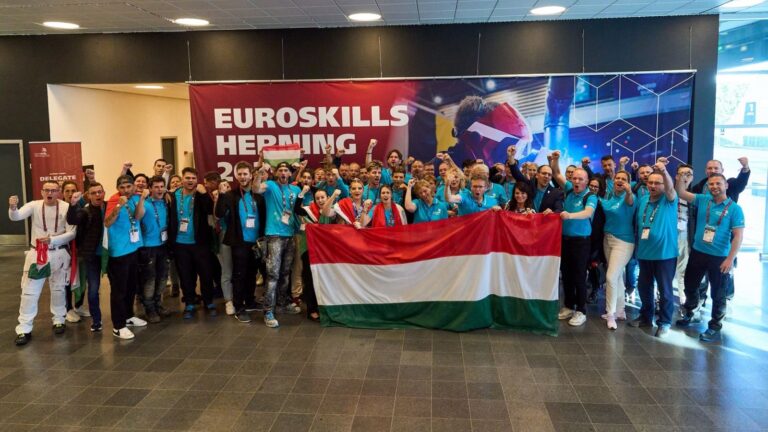Stories permeate our lives. From the moment we are born, every day we write our personal life story—a narrative that fundamentally defines who we are. The narrative turn in the social sciences and humanities has led researchers to see identity as a narrative phenomenon in which individuals construct a personal story about themselves. We incorporate past and future events into our self-narrative, which reinforces our sense of self-continuity, that is, our experience of ourselves as a continuous entity over time. This is true not only for individuals but also for groups. All communities, large and small, have dominant stories that define their functioning and self-image. Nations are perhaps among the largest groups where this phenomenon can be observed and studied. Such widely shared, transgenerational stories are referred to in academic discourse as master narratives. In Hungary, unique master narratives have emerged over the centuries that live with us to this day. We can run into them everywhere in the most diverse segments of life: in culture, in education, even in politics. What exactly does the term master narrative mean and why is it so crucial to our lives and identities? What are the defining Hungarian master narratives?
The concept of a master narrative has been used in academic discourse for decades, albeit often in different meanings and contexts. According to the most accepted definition, master narratives are culturally shared stories that influence our thoughts, beliefs, values and behaviours.1 Others argue that a master narrative is a dominantly held, overarching story by a community that organizes the group’s past into a coherent timeline and often also sets the future direction for the community.2 Such grand social narratives ensure the temporal continuity of cultural groups, as the historical narratives of the community characterize the group in a defining way.3
From a slightly different perspective, master narratives are collective stories that mark the direction of a collective subject or group’s existence by influencing personal identities and narratives.4 Hammack, however, refers to master narratives as widespread cultural scripts or ‘dominant discourses’ in a society.5 Ágnes Heller defines a master narrative as a general pattern of interpretation. According to her, its function lies mainly in interpreting the past, present and future of a cultural community.6 Others have defined the concept as a story that ‘creates all other stories’, endowing factual statements with meaning and emotional significance by embedding them in a larger, coherent narrative structure.7 Bamberg has considered master narratives as ‘pre-existing normative discourses’.8 Taking this line of thought further, Hammack and Toolis argued that master narratives are obligatory discourses that individuals have to internalize and reproduce in order to maintain a particular social order.9
‘Such grand social narratives ensure the temporal continuity of cultural groups, as the historical narratives of the community characterize the group in a defining way’
The term master narrative was first used in academic discourse by the postmodern philosopher Jean-François Lyotard. It appeared first in his work The Postmodern Condition: A Report on Knowledge,10 in which Lyotard explained that the postmodern era is characterized by the loss of credibility of grand narratives (such as the Enlightenment, Marxism, scientific progress, or the salvation history of Christianity). Although the French philosopher was still writing about grand narratives (‘grands récits’) in 1979, his ideas can be fitted into what most of us today refer to as the master narrative. Lyotard, in discussing the concept, pointed out that broad social histories, as the ones we think of as master narratives today, do not always reflect the realities of individuals and small communities. According to him, great stories, such as the narratives of progress, scientific advancement, freedom and human emancipation were the basis of modernity, but their validity has now been eroded. Indeed, such dominant grand narratives can be oppressive because they exclude alternative perspectives and marginalize the stories of minorities within a society. For all these reasons, Lyotard argues that in the postmodern era, a diversity of smaller, more local narratives (‘petit récits’), which do not aim to validate a single universal truth, will come to the fore, and thus usher in an era of epistemological pluralism.
We can see, therefore, that the concept of a master narrative has long been used in academic discourse in an interdisciplinary way. The term is often used in different contexts and in a wide diversification of empirical work.11 The lack of an all-encompassing definition was first pointed out by McLean and Syed, who attempted to structure the work in the field by setting up a master narrative framework, classifying the types of master narratives and at the same time clarifying the concept itself.12 They argue that it is necessary to be able to identify and analyse master narratives within a given society more effectively. Since then, their model has become an inescapable part of the discourse on master narratives, which also sheds new light on identity development; therefore, the framework associated with their name will be discussed in more details in this paper.
Master Narratives in the Service of Politics
Hammack and Toolis emphasize that master narratives are not only about historical events or collective memories, but also about the fundamental meaning of social categories.13 According to them, master narratives are dominant social ‘scripts’ that can be identified in cultural products and political discourses (eg media, public life, literature, film, textbooks). These scripts comprise collective narratives that range from the history of a group to the idea of what it means to live and exist in a particular social category.14
Hammack and Toolis have pointed out that in empirical research, master narratives are best examined in cultural products, artefacts and public discourses.15 In doing so, they have implicitly provided their own typology: according to them, master narratives are about events (ie history) and groups (ie social identities). Mario Carretero points out that historical master narratives continue to play an important role in the imagination of the nation today, as they serve the romantic aims of history education particularly well.16 Their influence is therefore becoming more widespread and more intense in the emergence of new nationalisms, primarily in Europe but also in other parts of the world.
‘Historical master narratives continue to play an important role in the imagination of the nation today’
Billig, among others, pointed out that politicians often invoke events from national history to promote their political agendas.17 Later, in the context of master narratives, Levinger highlighted that political campaigns can gain credibility and power if they are embedded in national master narratives.18 According to him, politicians often explicitly build on a master narrative of national decline and rebirth. In his case study of Russia, the author examines this in the context of political disinformation campaigns. Indeed, in many cases, if not for disinformation purposes, many political actors prefer to use the ‘make our nation great again’ narrative, as almost every country has a master narrative of how the nation became great once already in the past. Donald Trump’s slogan ‘Make America Great Again’ was also used during the 2024 US presidential election; as we have seen in hindsight, with great success.
Master Narratives as Social Forces Influencing Identity Development
A master narrative is often considered in the context of identity development as an external, social, environmental factor influencing the process.19 When discussing identity issues, we mostly talk about narrative identity, as the narrative turn in social sciences and humanities has led us to consider identity as a narrative phenomenon.20 Thus, there is now a mostly scholarly consensus that identity is a narrative construct in which a person composes a life story.21 The scholarly debate is mostly about the extent to which individuals do this autonomously or to what extent they are influenced by social and cultural contexts, such as master narratives.
McAdams defines identity as a subjective, constructed and constantly evolving narrative, which is essentially about how the individual has become the person he or she currently considers him or herself to be.22 Pasupathi, Brubaker and Mansour also highlight that this story integrates the past, present and future, mostly to provide the individual with a sense of continuity in their own life.23 A personal narrative is thus not only a way to use it to make sense of one’s own self across timelines, but also to create this sense-making in different contexts.24
The central idea of McLean and Syed’s model is that in the process of identity development, while constructing one’s own personal narrative (life story), the individual inevitably engages in a kind of dialogue and negotiation with the master narratives dominant in his/her socio-cultural milieu.25 The individual then has only two options: either to accept these master narratives, adapt to them and internalize them, thus incorporating them into his or her personal life story, or to construct alternative ones, if his or her values and experiences do not fit into the dominant patterns outlined by the master narratives within a society. According to McLean and Syed, master narratives are the raw material that all people are forced to work with in order to understand how to live a ‘good’ life within a given society. For many people, whose lives and visions fit into social structures and norms, hence these master narratives are functional and useful—their use and incorporation into their own identities is unproblematic. Others, however, may need to develop or adopt an alternative narrative that is at a minimum different from the master narratives and at a maximum resistant to them.
‘The individual then has only two options: either to accept these master narratives, adapt to them and internalize them…or to construct alternative ones’
The term alternative narrative is rooted in the concept of counter-narratives.26 Counter-narratives are defined by Andrews as stories told and lived by people that implicitly or explicitly resist dominant cultural narratives. In a broader sense, the term covers any narrative that gains meaning through its relationship with one or more other narratives.27 In other words, they are never meaningful in themselves, and are always in tension with another narrative category. Counter-narratives are thus a means of questioning and re-framing the hegemonic master narratives. Therefore, they are necessarily reactive and resistant narratives, always representing an alternative and opposing perspective to the dominant narratives.28
McLean and Syed use the term alternative narrative in place of the term counter-narrative, in a broader sense—referring to any personal or group story that differs from a mainstream master narrative or somewhat opposes it, but not necessarily overtly and in the conflictual way that the academic community generally refers to counter-narratives.29
The narrative functioning of marginalized groups is discussed tangentially by McLean and Syed in their master narrative model.30 Indeed, they have developed a dynamic framework emphasizing that changes in master narratives also start from the level of individual narratives. When a sufficient number of individuals (typically members of marginalized groups) build up a narrative that is different from, but similar to, existing master narratives, they can be added together and gradually shifted from the periphery of society to its centre, where they can become established over time as a new master narrative. At the same time, McLean and Syed highlight that this process can often be slow and conflictual due to the rigidity of master narratives. By focusing on the concept of master narratives, the model is thus able to integrate top-down and bottom-up processes into a single framework, as it highlights that master narratives influence individuals from a dominant position, from power structures, but that individuals may also be able to shape or overthrow dominant master narratives by formulating and constructing alternative narratives. Ultimately, it is this interaction that gives rise to the dynamics of personal identity development in a social context. In other words, examining the dynamics between personal, master and alternative narratives can provide a comprehensive framework for understanding identity development in context.
Defining Hungarian Master Narratives
One of the most powerful and pervasive Hungarian master narratives is the enduring story of an unwavering desire for freedom and the continuous struggle to achieve it. According to this master narrative, the Hungarians have had to fight for their freedom in the Carpathian Basin almost continuously since the conquest of Hungary, because our self-determination and sovereignty have been constantly threatened by some oppressive power. Our common history is a message to future generations that it is worth standing up for our freedom in all circumstances, because for more than a thousand years this has been the key to our survival. It is a transgenerational legacy and duty for all Hungarians. This master narrative suggests that Hungary is a surviving nation, which has been tried countless times to be driven out of the heart of Europe, yet is still here today. So, despite our lost struggles for freedom, this narrative frames our very existence as a success story. The message of this master narrative and the ideology around it can be found in public monuments, education, political communication, institutions, the media and culture.
‘One of the most powerful and pervasive Hungarian master narratives is the enduring story of an unwavering desire for freedom and the continuous struggle to achieve it’
The Hungarian government is actively building on the master narrative of a national freedom fighter in its communication, when it is fighting against Brussels, which is trying to assert its sovereignty over Hungary. How this political communication can be effective is often puzzling in the West. But the answer is simple: in most Western societies, there is no master narrative of rebellion against an oppressive power, because in many cases in their history these countries have been the conquering powers—just think of the centuries of colonialism.
However, the master narrative built around the idea of the eternal struggle for freedom is not the only dominant collective story within Hungarian society. Closely linked to this is the master narrative that in our struggles and self-defensive wars we were never exclusively defending ourselves, but also the West. The national topos of the defensive bastion of Christianity is rooted in the ancient past. Already in his letter to Pope Innocent IV dated 11 November 1250,31 King Béla IV positions Hungary as the defender of Europe and the Christian faith against the threat from the East, thus trying to gain support for the defence against the Tatars. Béla IV states, among other things, that:
‘Every day news comes to us of the Tatars: their anger is directed chiefly against us, because we have refused to submit to them even after such a calamity, when all other nations, having learned of their hostile forces, have become their tributaries…But not only against us, but also against all Christendom, they have concentrated their forces, and, as many have credibly and certainly said, they are firmly resolved to launch their army of innumerable numbers against all Europe…We have done what we could, when we have confronted the hitherto unknown forces and nature of the Tatars…For our Council, after repeated deliberations, has come to the conclusion that it would be better for us, as well as for all Europe, if the Danube was fortified with fortresses…If this territory was taken possession of by the Tartars, which should not happen, the gate would be opened to them to other lands of the Catholic faith.’
In the letter of Béla IV, a secondary, minor narrative appears as well, which in the following centuries also became a master narrative within Hungarian society. It is the narrative of the abandonment of Hungarians, our perpetual marginalization in Europe, and the West turning away from us.
‘In so distressed a situation, we have not received any beneficial aid from any ruler or people of Christian Europe… The multitude of the wise…wonder, and cease not to wonder, that apostolic piety should take care of many, as of the empire of Constantinople, and of the parts beyond the sea, which, if lost, God forbid, should do so much harm to the inhabitants of Europe, as if our country alone were in the possession of the Tatars,’ the Hungarian monarch explained.
The story, which has now become a master narrative, is that for centuries the Hungarians defended Christian Europe, from where they have never received help or gratitude. Neither in 1848 nor in 1956. On the contrary: the West has always pushed us out of itself, and when it had the chance, punished us mercilessly (eg Trianon). There is also a Hungarian master narrative to explain all this: that the Hungarians are still a somewhat alien people in Europe today, without relatives. Hungarians, coming from the far East, wedged themselves into the heart of Europe as the ‘tip of the Turanian spear’, as the Turanists put it,32 occupying the Carpathian Basin, which the West also coveted. We do not really belong to the West or the East, so we are doomed to solitude. In his poetry and work, Endre Ady already portrayed Hungary as a tragically lonely nation.33 ‘Comp-land, Comp-land, Comp-land: even in his most capable dreams he only wandered between two coasts: from East to West, but preferably back,’ Ady wrote in 1905 in his essay ‘In the Margin of an Unknown Corvina Codex’.
These master narratives are still with us today. We encounter them in many different areas of life: in culture, education or even in public discourse. They have an impact on our public administration, on the political communication of Hungarian parties and on voter behaviour. A fuller understanding of the way a society works and the drivers of its decisions thus requires knowledge of existing master narratives.
- See: Michael Bamberg, ‘Considering counter-narratives in narrative inquiry’, In M Bamberg & M Andrews (Eds.), Considering counter-narratives: Narrating, resisting, making sense, Amsterdam, John Benjamins, 2004, pp. 351–371.; P L Hammack, ‘It’s not a normal life we lead’: Uprising, occupation, and the narratives of Palestinian youth, Unpublished manuscript, Department of Psychology, University of Chicago, 2008.; K C McLean & M Syed, ‘Personal, master, and alternative narratives: An integrative framework for identity development in context’, Human Development, 58(6), 2015, 318–349, https://doi.org/10.1159/000445817. ↩︎
- C Humlebæk, ‘Master narratives of nationhood: Dominant historical narratives as a framework for political identity’, Historia y Política, 39, 2018, 423–448, https://doi.org/10.18042/hp.39.15. ↩︎
- R Heersmink, ‘Cultural identity, collective memory, and artifacts’, Mind & Society, 20(1), 2021, 165–183, https://doi.org/10.1007/s11299-020-00268-9. ↩︎
- P L Hammack, Narrative and the Politics of Identity: The Cultural Psychology of Israeli and Palestinian Youth, New York, Oxford University Press, 2011. ↩︎
- P L Hammack, ‘Narrative and the cultural psychology of identity’, Personality and Social Psychology Review, 13(3), 2009, 222–247, https://doi.org/10.1177/1088868309341561. ↩︎
- Heller Ágnes, ‘A narratív identitás és a modernitás kettős kódja’, Világosság, 47(11), 2006, 3–15. ↩︎
- G Rosen, ‘Metanarrative, collective meaning, and the quest for identity’, Narrative Inquiry, 13(2), 2003, 371–393, https://doi.org/10.1075/ni.13.2.12ros. ↩︎
- Bamberg, 2004. ↩︎
- P L Hammack and E E Toolis, ‘Narrative as a root metaphor for political beliefs: Emerging adults and the enduring power of master narratives’, Emerging Adulthood, 3(2), 2015, 83–99, https://doi.org/10.1177/2167696814563383. ↩︎
- J F Lyotard, La condition postmoderne: Rapport sur le savoir, Paris, Éditions de Minuit, 1979. ↩︎
- See Bamberg, 2004; Hammack, 2008; P L Hammack and B J Cohler (eds), The story of sexual identity: Narrative perspectives on the gay and lesbian life course, New York, Oxford University Press, 2009.; R Harré and F M Moghaddam (eds), The self and others: Positioning individuals and groups in personal, political, and cultural contexts, Westport, CT, Praeger, 2003.; A Thorne and K C McLean, ‘Telling traumatic events in adolescence: A study of narrative identity formation’, Journal of Research on Adolescence, 13(2), 2003, 1–21, https://doi.org/10.1111/1532-7795.1302001.; N M Weststrate and K C McLean, ‘The rise and fall of “gay”: A cultural-historical approach to gay identity development’, Memory, 18(2), 2010, 225–240, https://doi.org/10.1080/09658210903153923. ↩︎
- K C McLean and M Syed, ‘Personal, master, and alternative narratives: An integrative framework for identity development in context’, Human Development, 58(6), 2015, 318–349, https://doi.org/10.1159/000445817. ↩︎
- Hammack and Toolis, 2015. ↩︎
- P L Hammack, ‘The cultural psychology of American macro narratives’, Political Psychology, 31(1), 2010, 5–31, https://doi.org/10.1111/j.1467-9221.2009.00734.x. ↩︎
- Hammack and Toolis, 2015. ↩︎
- M Carretero, ‘Imagining the nation: Master narratives in history education and national identity’, in M Carretero, S Berger, and M Grever (eds), Palgrave Handbook of Research in Historical Culture and Education, Palgrave Macmillan, 2018, 261–283. ↩︎
- M Billig, Banal Nationalism, London, SAGE Publications, 1995. ↩︎
- M Levinger, ‘National decline and rebirth: The power of master narratives in political campaigning’, Journal of Strategic Security, 11(3), 2018, 1–15, https://doi.org/10.5038/1944-0472.11.3.1694. ↩︎
- McLean and Syed, 2015. ↩︎
- M Esteban-Guitart, ‘Identidad narrativa: El relato de la propia vida’, Revista de Educación, 359(1), 2012, 535–545. ↩︎
- D P McAdams and K C McLean, ‘Narrative identity’, Current Directions in Psychological Science, 22(3), 2013, 233–238, https://doi.org/10.1177/0963721413475622. ↩︎
- D P McAdams, The Redemptive Self: Stories Americans Live By, New York, Oxford University Press, 2013. ↩︎
- M Pasupathi, E Mansour, and J R Brubaker, ‘Developing a life story: Constructing relations between self and experience in autobiographical narratives’, Developmental Psychology, 43(1), 2007, 14–27, https://doi.org/10.1037/0012-1649.43.1.14. ↩︎
- K C McLean, M Syed, A Yoder, and A F Greenhoot, ‘Identity integration: The importance of domain content in linking narrative and status approaches to emerging adult identity development’, Journal of Research on Adolescence, 24(4), 2014, 751–772, https://doi.org/10.1111/jora.12165.; E P Schachter, ‘Narrating community: The creation of one’s identity through personal and cultural narratives’, Journal of Adolescent Research, 19(2), 2004, 116–135, https://doi.org/10.1177/0743558403258138.; M Syed, ‘Developing an integrated self: Academic and ethnic identities among ethnically diverse college students’, Developmental Psychology, 46(6), 2010, 1590–1604, https://doi.org/10.1037/a0020738. ↩︎
- McLean and Syed, 2015. ↩︎
- M Andrews, ‘Counter-narratives and the power to oppose’, in M Bamberg and M Andrews (eds), Considering counter-narratives: Narrating, resisting, making sense, Amsterdam: John Benjamins, 2014, p. 1. ↩︎
- A Piekut, ‘Counter-narratives and their social context’, Narrative Inquiry, 28(2), 2018, 330–349, https://doi.org/10.1075/ni.17058.pie. ↩︎
- Ibid. ↩︎
- McLean and Syed (2015) ↩︎
- Ibid. ↩︎
- Nagy B, ‘IV. Béla levele IV. Ince pápához, 1250. november 11.’, in T Alabán (ed), Magyar diplomácia a tatárjárás korában, Budapest, METEM, 2003, 95–99. ↩︎
- Ablonczy B, ‘“Lándzsahegy”, néprokonság, small talk: Turanizmus és keleti gondolat a két világháború közötti magyar külpolitikai gondolkodásban’, in P Pritz (ed), Magyar külpolitikai gondolkodás a 20. században, Budapest, Magyar Történelmi Társulat, 2006, 60–73. ↩︎
- See: Domokos M, ‘Ady Endre tragikus magánya’, Irodalmi Szemle, 48(4), 2005, 45–53.; Komlós A, ‘A magyar nemzet magányossága’, Nyugat, 19(17), 1926, 713–722.; Keresztury D, ‘Magyar tragikum’, Nyugat, 27(8), 1934, 555–560.; Makkai S, Egyedül vagyunk, Kolozsvár, Minerva, 1927. ↩︎
Related articles:

